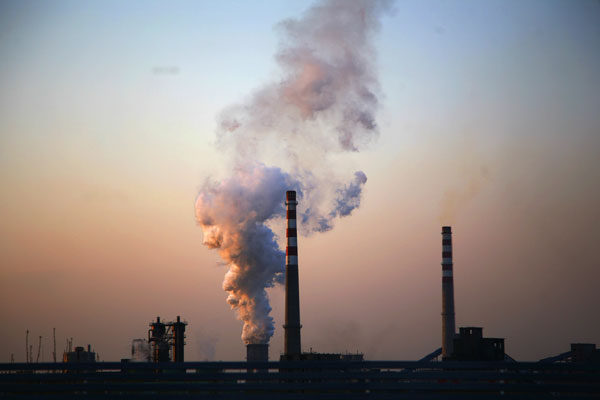China's greenhouse gas emissions to peak years ahead of goal: report
Updated: 2015-06-09 09:30
(Xinhua)
|
||||||||
 |
|
Smoke billows from a factory in Dezhou, Shandong province. To reach mandatory efficiency goals, the government had to take some extreme steps, including power cuts and limits on electricity supply in 2010. [Provided to China Daily] |
LONDON - China's greenhouse gas emissions could peak over five years earlier than expected, which will contribute to the effort of curbing global warming, according to a report jointly published Monday by two institutes at the London School of Economics.
Analyzing trends in the key emitting sectors, researchers conclude that China's greenhouse gas emissions are unlikely to peak as late as 2030, the upper limit set by the Chinese government last year, and are much more likely to peak by 2025, or even earlier than that, the report stated.
The researchers also say that if China's greenhouse gas emissions peak by 2025, they would reach between 12.5 and 14 billion tons of carbon dioxide equivalent. This finding suggests it is increasingly likely that the world will avoid global warming of more than two degrees Celsius above pre-industrial levels.
China's transformation has profound implications for the global economy, and "greatly increases the prospects for keeping global greenhouse gas emissions within relatively safe limits," according to the report.
"The United Nations Climate Change Conference in Paris later this year will be more successful if governments everywhere understand the extent of change in China, its implications for global emissions, and the positive impact that China's clean industrial development, investment and innovation plans are likely to have on global markets for clean goods and services," it added.
In a joint statement issued during a November visit last year to Beijing by U.S. President Barack Obama, China pledged to achieve the peaking of carbon dioxide emissions around 2030, and increase the share of non-fossil fuels in primary energy consumption to around 20 percent by 2030.

 National college entrance exam ends in most parts of China
National college entrance exam ends in most parts of China
 Peking University opens Chinese traditional art courses
Peking University opens Chinese traditional art courses
 Rescuers mourn victims on seventh day since Eastern Star disaster
Rescuers mourn victims on seventh day since Eastern Star disaster
 Rescuers enter Eastern Star hull in search efforts
Rescuers enter Eastern Star hull in search efforts
 Gaokao held across China
Gaokao held across China
 Man sues actress for staring at him
Man sues actress for staring at him
 Students prepare to take national college entrance exams
Students prepare to take national college entrance exams
 Across America (May 29- June 4)
Across America (May 29- June 4)
Most Viewed
Editor's Picks

|

|

|

|

|

|
Today's Top News
China gives its yuan to Broadway
Questions remain unresolved in the cruise ship disaster
Escaped New York prisoners may have had help from staff
Memphis hospital adds new China affiliate
Police alerted over forbidden photo shoot
Heavyweight Zhang wins unanimous decision
China mourns Yangtze shipwreck victims as search continues
China signs $50m agreement with FAO to support developing countries
US Weekly

|

|






